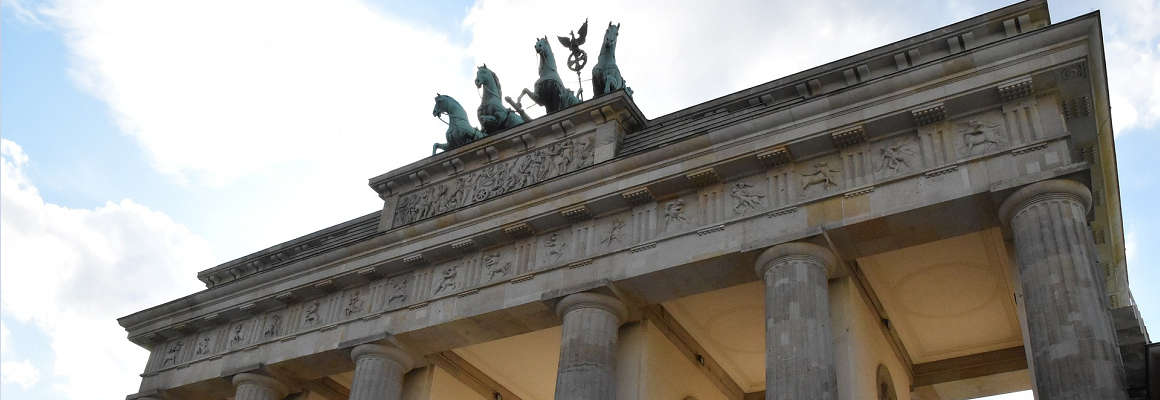

The two Colognes
Cologne and Berlin were two German cities that bore maximum destruction during the two World Wars. Being the foremost provincial capitals, they were always in the first line of attack. This effect of war is well documented in several films, documentaries and research manuscripts. Alone in Berlin, a war drama depicting the times of World War II, was exclusively shot in Berlin and Cologne. The film traces the life of a working-class couple Anna and Otto Quangel who lose their only son in the bombing of France. This loss triggers a grief and sense of resentment against the Nazi regime and they start opposing Hitler. The film traces the journey of this couple and depicts the beauty, heritage and history of Cologne and Berlin in the same screen space, making it easier to highlight their similar features. Directed by Vincent Perez, this movie is adapted from Hans Fallada’s fiction novel by the same name. Brendan Gleeson and Emma Thompson played the lead roles in this acclaimed film and might have had taken a flight from Cologne to Berlin while shooting.


Since time immemorial, Cologne and Berlin were two of the most well-connected cities of the world. In the early nineteenth century along with Koblenz, they were centres of Prussian semaphore system, a well-known messaging and signaling technique that used optical signals. Between 1832-1849, these cities helped in military communication between Central Berlin region and Rhine province that included the ancient city of Cologne. Later, electric telegraph service took over and use of semaphore got redundant. Still, this simple communicative system, invented by French engineer, Claude Chappe, in 1794 was used in railways. The difficulty in setting up a semaphore telegraphic system often resulted in apprehensions. However, Napoleon Bonaparte used it successfully and made the world aware of its usefulness. Thus, a 550km of semaphore system was established, with stations at Koblenz, Cologne and Berlin which would code, decode and transcribe messages sent.
Like any other European nation, Germany is full of equestrian statues and busts. Cologne and Berlin deserve a special mention in this regard as both account for highest number of equestrian statues in the country. While Cologne has six, Berlin has seven such structures. Together they account for 13 equestrian statues which is almost one third of the total number of such artefacts in Germany. Prussian king Frederick II’s equestrian statue in Berlin is a landmark monument. It was made by sculptor Christian Daniel Rauch in 1839 and opened to public in 1851. This statue resides in the boulevard Unter den Linden at Brandenburger Gate. Other statues in Berlin include those of King Friedrich Wilhelm IV at Alte National Galerie, Emperor Wilhelm I monument at the Berlin City Palace and Saint George defeating the dragon. While, Cologne harbours the most famous equestrian statue of the last Prussian emperor Kaiser Wilhelm II, in the western end of Hohenzollernbrucke bridge. Others include King Friedrich Wilhelm IV statue made by Gustav Blaeser and King Wilhelm I statue by Friedrich Drake. For tourists taking a flight from Cologne to Berlin, these statues built in remembrance of Prussian kings, is a major attraction.


Berlin and Cologne have a unique business connect through the world of showbiz. Popkomn and Bread & Butter Tradeshow are two such ventures. While the former is a global music platform, the latter deals with the world of fashion. Popkomn is a musical tradeshow showcasing work of prolific musicians from across the globe. Young dynamic performers get a chance to play along with stalwarts in the field. They have formed a Popkomn Congress, an association which deals with everything musical – from music trends, to market dynamics, to performance. They go about in an all-inclusive manner from conferences, meetings, market surveys and music shows. Their first conference took place at Dusseldorf in 1989. Next year it was in Cologne, while in 2004 it was held in Berlin. Many musicians had to take a flight from Cologne to Berlin to participate in the meet. These festivals are quite exuberant. In 2006, it involved live performances by more than 2000 global musicians in 30 pubs of Berlin.
While, Bread & Butter tradeshow is a formidable part of German clothing and footwear industry. Karl Heinz Muller, a German entrepreneur came up with this idea. In 2001, he held the first fashion tradeshow in Cologne. Primarily a ready-made jeans manufacturer, the business later expanded to other apparels and footwear products. In 2003, it participated in the Berlin Fashion Week and took part in the event every year till 2007. After moving to Barcelona in 2008, it was back to Berlin again in 2009. Since then Bread & Butter became an integral part of German fashion circuit.
Both Berlin and Cologne have numerous artists and art galleries which strengthen their connection. The contemporary gallery of Buchholz has centres in both the cities along with a third in New York. In 1986 this gallery started in Cologne and was the brainchild of Daniel Buchholz. Presently, it is run by Christopher Muller and Buchholz. In Cologne, the gallery opened its wings at Neven-DuMont and Elisen Street and later spread to other areas. In Berlin, the gallery made its mark on Fasanen Street and in New York it is on East 82nd Street. The Berlin and the New York sections are relatively new and made their mark in 2008 and 2015 respectively. Art historian Christopher Muller was associated with this gallery since 1996, when he initiated art film shows and exhibitions.
